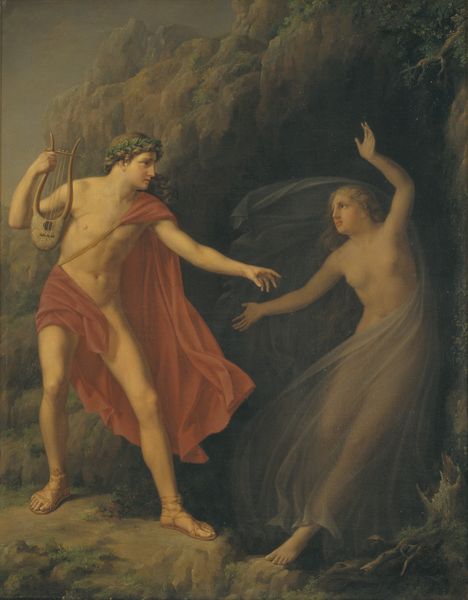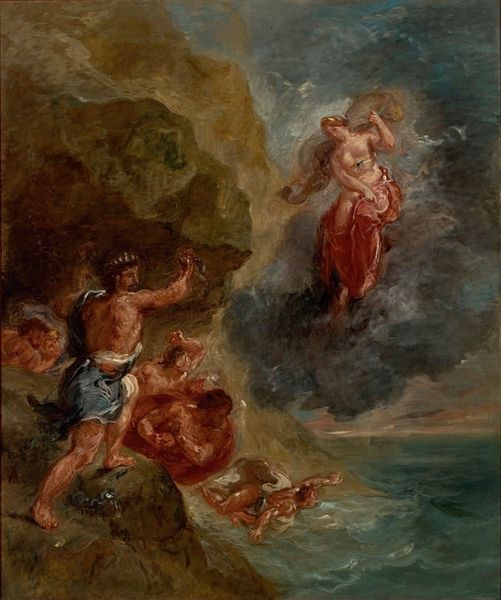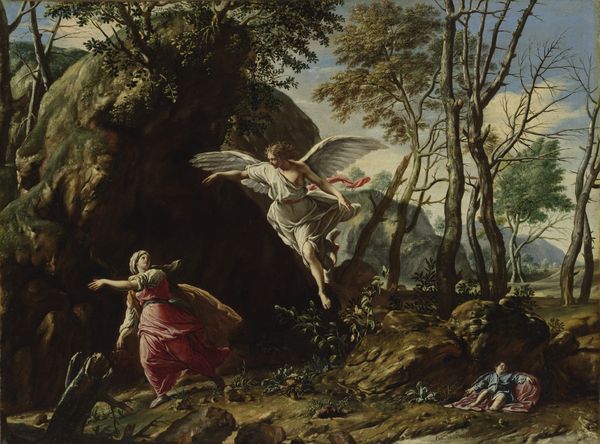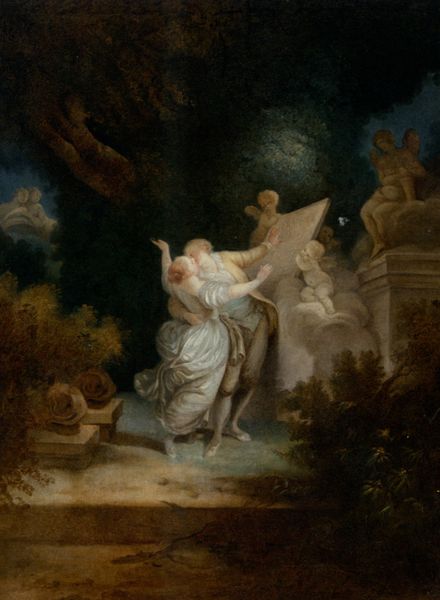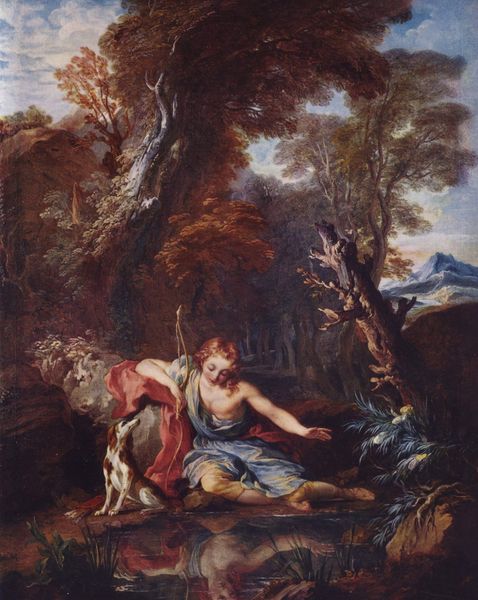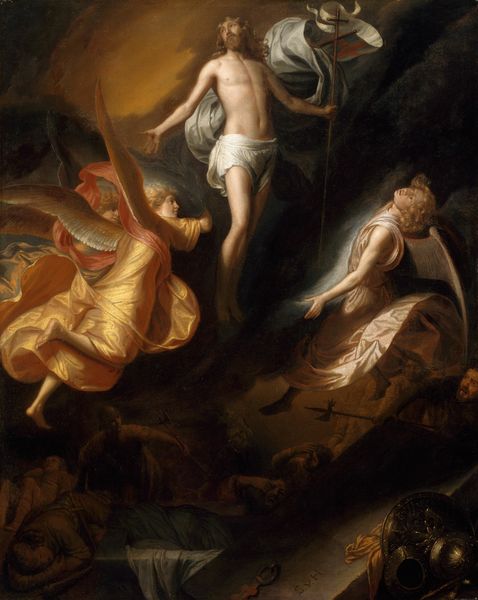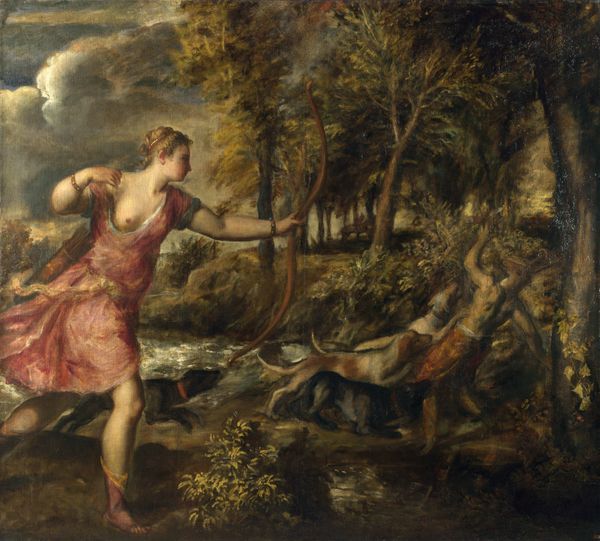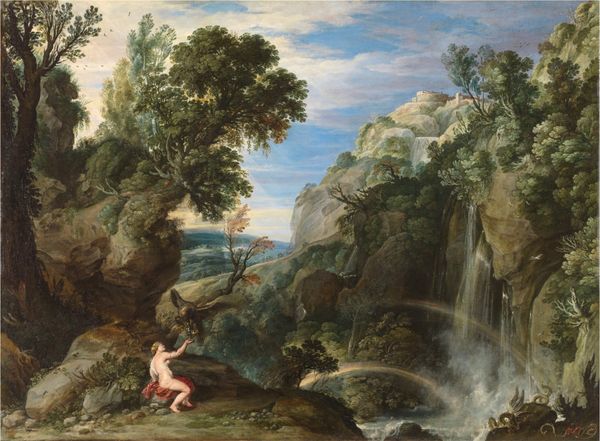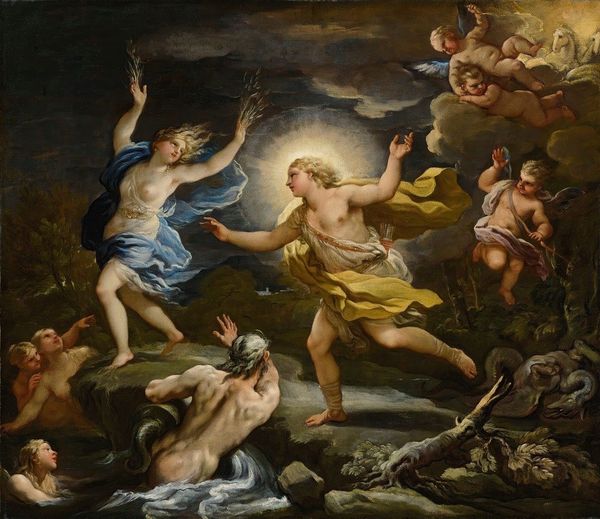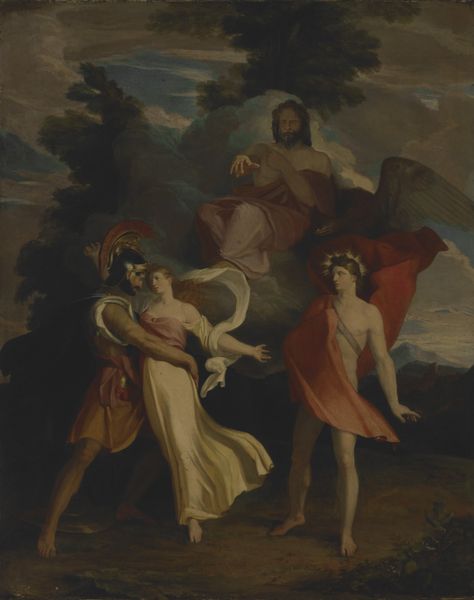
oil-paint
#
allegory
#
baroque
#
oil-paint
#
history-painting
#
nude
Dimensions: height 64 cm, width 53.3 cm, depth 3.8 cm
Copyright: Rijks Museum: Open Domain
Curator: This work strikes me as an example of contained frenzy. Editor: I'm here to introduce Eglon van der Neer's oil on canvas, "Circe Punishes Glaucus by Turning Scylla into a Monster," dating to 1695. The medium here allows van der Neer to conjure complex luminosity. Curator: Luminosity, yes, particularly in the rendering of flesh. Yet I keep returning to Circe's gesture, pouring something from the shell. It brings such a dark tension. Editor: The oil paints grant van der Neer incredible control, but that control extends only so far. The social position and patronage he needs will always limit him. The sheen he coaxes is also at the service of power. Curator: Agreed. But what visual rhymes does he use? The echoed gestures of Scylla and Glaucus contrast with the cool control of Circe. Editor: It is, fundamentally, an artisanal process, where he employs costly raw materials transformed by labor in ways both unique and entirely in keeping with the period’s market forces. The cobalt, the lead… Curator: And visually, that potent dynamic boils down to formal composition. Take, for example, the swirling composition—figures pulled and pushed from whirlpool forces, which contrast greatly with Circe’s firm position, standing on the shoreline between both land and sea, and good and bad fortunes. Editor: Even the pigments available would contribute to this overall drama. I mean, think about the complex network required to procure the materials and training of such a talent; the access granted… the lack of it, actually, to many others! Curator: Well, looking at this image overall, regardless of external circumstances, is quite intriguing! Editor: Indeed! It prompts reflections beyond pure aesthetics alone.
Comments
rijksmuseum about 2 years ago
⋮
The unsightly, but good-natured sea god Glaucus was in love with Scylla, but this was unrequited. To win her over, he sought the help of the sorceress Circe. This was a mistake, for Circe was herself in love with him. In a fit of rage, she changed poor Scylla into a monster. Van der Neer set the story from Ovid’s Metamorphoses in sinister surroundings. Gesturing theatrically, the sorceress performs her vengeful deed.
Join the conversation
Join millions of artists and users on Artera today and experience the ultimate creative platform.
